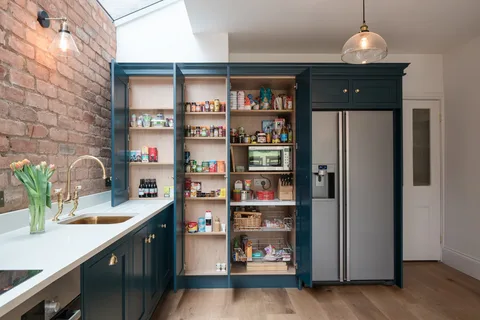1. Understanding Kitchen Cabinet Styles
When selecting kitchen cabinets, it’s crucial to first understand the various styles available. From traditional to modern, cabinets come in a range of designs that cater to different aesthetic preferences and functional needs. Traditional cabinets often feature detailed moldings, raised panels, and rich wood finishes, while modern cabinets emphasize sleek lines, minimalistic hardware, and often, high-gloss finishes. Transitional styles blend elements of both traditional and modern designs, providing a versatile option that suits a variety of interiors. By choosing the right style, you can ensure your kitchen cabinets align with your overall home decor and personal taste.
2. Choosing the Right Material for Durability and Aesthetics
The material of your kitchen cabinets plays a significant role in their durability, appearance, and maintenance. Solid wood is a popular choice due to its strength and classic look, but it can be susceptible to changes in humidity and temperature. Plywood and MDF (medium-density fiberboard) are engineered alternatives that offer stability and are less prone to warping. For a more budget-friendly option, laminate cabinets are available and provide a wide range of colors and patterns. Each material has its pros and cons, so it’s important to consider factors such as longevity, maintenance, and budget when making your decision.
3. Custom vs. Pre-Fabricated Cabinets: Making the Right Choice
When it comes to kitchen cabinets, you can choose between custom and pre-fabricated options. Custom cabinets are designed specifically for your kitchen, offering a tailored fit and the ability to choose every detail, from dimensions to finishes. This option allows for maximum flexibility and personalization but comes at a higher cost and longer lead time. On the other hand, pre-fabricated cabinets are mass-produced and available in standard sizes, which makes them more affordable and quicker to install. However, they may not fit as perfectly or offer the same level of customization as their custom counterparts. Evaluating your needs, budget, and timeline will help determine the best choice for your kitchen.
4. Installation and Maintenance Tips for Longevity
Proper installation and maintenance are key to ensuring the longevity and functionality of your kitchen cabinets. It’s often best to hire a professional installer to ensure cabinets are mounted correctly and aligned perfectly. During installation, make sure that the cabinets are properly secured and leveled to prevent future issues. Once installed, regular cleaning and maintenance will keep your cabinets looking their best. For wooden cabinets, use a soft cloth and a mild cleaner to avoid damaging the finish. Ensure that hardware is tightened regularly, and inspect for any signs of wear or damage. Following these tips will help preserve the beauty and functionality of your kitchen cabinets for years to come.



